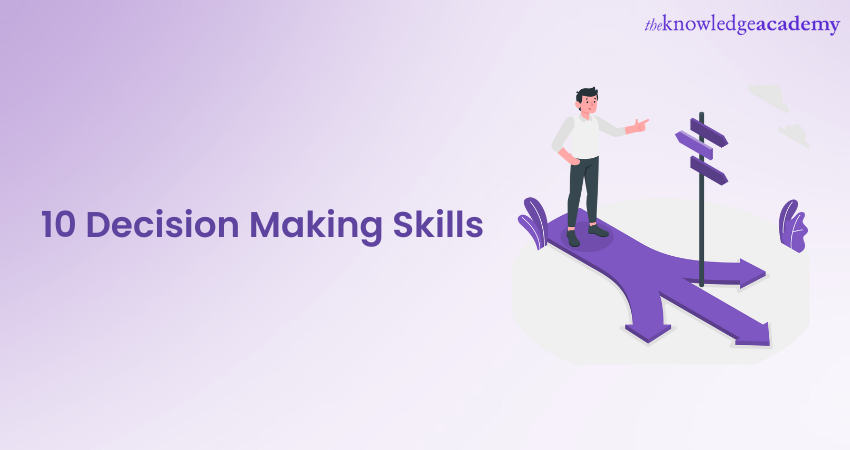The Art of Decision Making: Ways to Make Improved Decisions
In a world overflowing with options, the capacity to make wise choices is more vital than before. From the mundane daily decisions we face—what to have for breakfast—to significant life-altering decisions like selecting a career path, the method of making decisions forms our existence in significant ways. However, in spite of its significance, many people have difficulty with taking decisions, frequently succumbing to indecision or regretting their choices afterwards.
Comprehending the science behind decision-making can enable you to master the craft of smart making decisions. In this write-up, we will examine 10 established techniques to boost your ability to make decisions, explore the mental aspects that influences great choices, and offer practical tools to enhance transparency and assurance in your decisions. Whether you are a leader faced with difficult decisions or an individual struggling with doubt, these tips will empower you to make improved decisions, even in pressure. Join us as we uncover the strategies that can change your making decisions process and help you steer life with increased assurance and clarity.
Strategies for Better Decision-Making

Improving decision-making begins with honing the skill of smart decision-making. One effective technique is to utilize a decision-making model, such as the benefits and drawbacks list. This straightforward tool helps map out the potential advantages and drawbacks of each option, making it more manageable to evaluate your choices. Additionally, applying the SMART criteria—Specific, Quantifiable, Attainable, Pertinent, and Time constrained—can provide clarity and focus when assessing options, ensuring that decisions match with your goals.
Another vital technique involves reviewing past decisions to gain insights from them. Looking back on past choices can illuminate patterns in decision-making, permitting you to pinpoint what was effective and what did not. This practice encourages a development mindset and motivates you to view mistakes as opportunities for learning rather than setbacks. By developing this reflective habit, you can enhance your capacity to make wise decisions in the future.
Ultimately, addressing decision fatigue is vital for maintaining clear thinking. Simplifying your decisions, whether by planning your day to make important decisions when your focus is at its best or limiting the number of daily decisions you consider, can alleviate overwhelming feelings. Frequent pauses and meditation practices can also help refresh your mind and improve attention, allowing for more efficient and more successful decision-making under duress.
Comprehending Decision-Making-Making Behavioral Science
The decision-making process is firmly rooted in human behavior, shaping how we evaluate options and reach conclusions. Cognitive biases play a crucial role in this process, often skewing our perception and causing us to make choices that deviate from rational thought. For example, the confirmation effect causes subjects to prefer information that strengthens their existing beliefs while disregarding contradictory data. Understanding these biases can assist individuals make more educated and balanced decisions.
Emotional awareness also substantially impacts decision-making. The capability to recognize and regulate one’s emotions allows for a sharper assessment of situations, particularly in stressful environments. Judgments made in the throes of emotion can result in regret, whereas a calm approach promotes improved judgment. Cultivating emotional awareness not only supports in personal decision-making but also improves interactions with colleagues during group choices.
Moreover, the interplay between intuition and rational thought is a vital aspect of decision-making psychology. Though intuition can provide rapid insights based on past experiences, relying solely on it can cause errors. Balancing gut feelings with structured analysis guarantees a comprehensive evaluation of options. This fusion allows individuals to make assured decisions that are both instinctive and rationally sound, leading to improved outcomes in various aspects of life.
Practical Tools for Decisive Choices
Making confident decisions often hinges on having the appropriate tools at your disposal. One effective method is to employ a decision matrix, which allows you to weigh multiple options against specific criteria that matter most to you. By allocating https://peterashbysmith.com/how-a-coffee-shop-line-taught-me-effective-decision-making/ to each option based on how well they meet these criteria, you can see your choices and make a better decision. This structured approach lessens biases and emotions that might cloud your judgment.
Another significant tool is the “10-10-10” rule, where you assess how you will feel about your decision in 10 moments, 10 months, and 10 decades. This method invites you to think beyond the immediate consequences, ensuring that your decisions align with your long-term goals and values. By positioning your choices in this way, you can gain clarity and confidence in the paths you pick.
Additionally, embarking on mindfulness can significantly enhance your decision-making process. Taking a moment to pause and reflect allows you to purge your mind of distractions and reduce anxiety associated with making tough choices. Techniques such as deep breathing or short meditation can help you connect with your intuition, making it easier to discern what feels right. By incorporating these tools into your decision-making routine, you can approach choices with greater assurance and clarity.